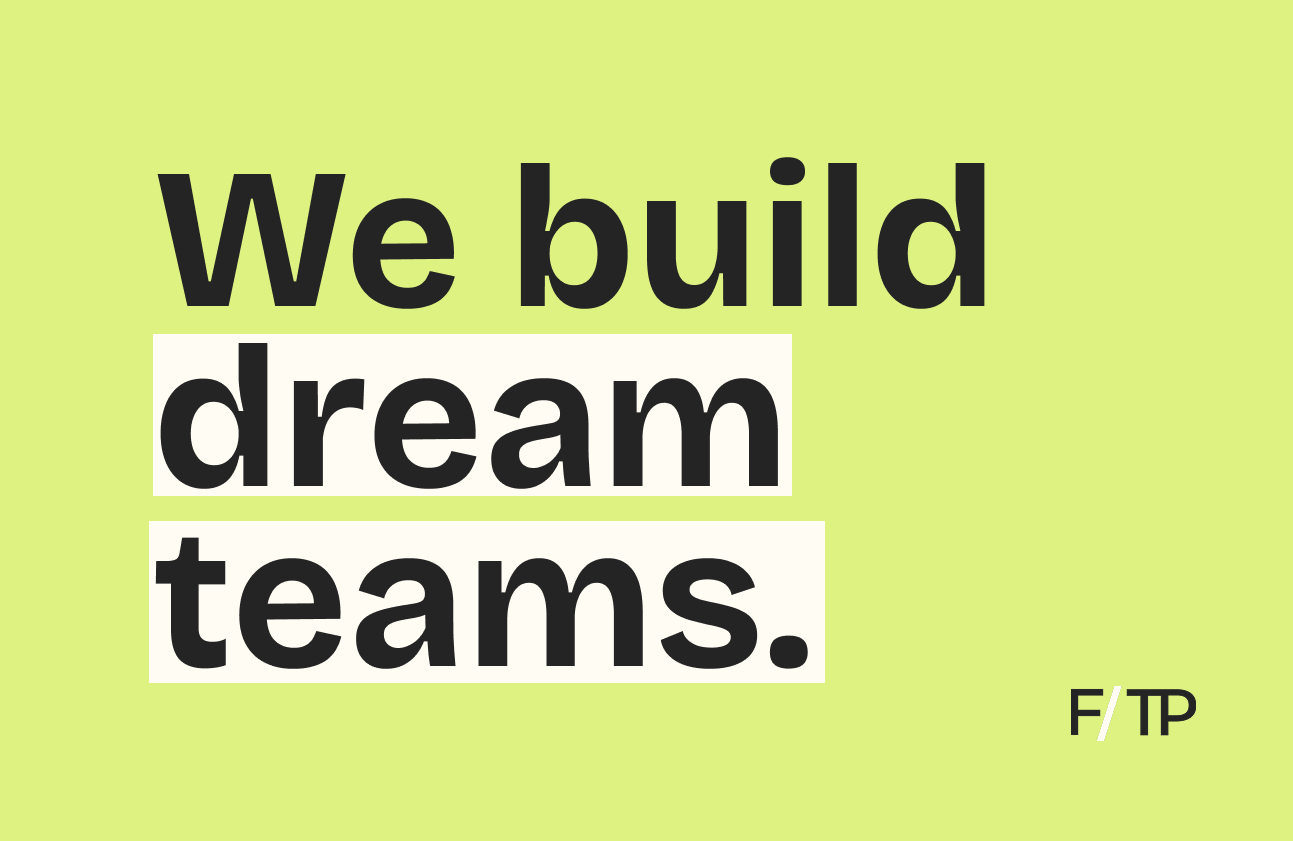In 2007, three Georgetown students had a problem: They couldn’t find fast, healthy food near campus.
Despite having no experience in the restaurant industry, the team scraped together funds, opened a tiny storefront, and worked with local farmers to source fresh food. They called it sweetgreen.
Flash forward, the salad chain is valued at more than $1.6B and recently filed to go public. Can this salad shop redefine fast food? Let’s dig in.
The Full-Stack Salad
The sweetgreen experience goes far beyond the bowl, the company leverages tech to bring customers along at every step.
Supply chain. sweetgreen prioritizes food that is local, organic, and sustainably sourced. The company invests heavily in tracking tools, including a venture into blockchain. Co-founder Jonathan Neman pointed out how transparency sets his company apart:
“Most restaurants have about 20 percent traceability into where their food comes from. We’re approaching 100 percent traceability into where all of our food comes from.”
This has a double benefit. Working with a roster of local farmers and artisans, sweetgreen can champion health and sustainability while bolstering its claims of serving fresher food.
Ordering. The heart of sweetgreen is its app, where users can order ahead to skip lines, save dietary restrictions, and even share nutritional info to their Apple Health app.
- Since launching mobile in 2013, sweetgreen’s overall sales have increased tenfold, with strong contributions from online ordering.
- A notable milestone, its 2016 app relaunch saw sales surge, with a monthly average growth rate of 79% YoY.
Delivery. A complement to digital, sweetgreen launched its native delivery service in January 2020. It has also invested heavily in its Outpost program, essentially an Amazon Locker for salads, sending batch orders to offices and apartment buildings.
While expensive up front, these moves serve as a moat, protecting the company as the delivery wars intensify.
Last year, COVID-19 more than doubled food delivery business for platforms like Uber Eats and DoorDash, eating into restaurants’ margins. According to Neman, it’s the industry’s defining battle:
“[It’s] reminiscent of… Nike versus Amazon, Disney versus Netflix, Four Seasons versus Expedia… a very similar story of whoever owns the customer extracts more value in that value chain.”
With an emphasis on owning the customer relationship and keeping delivery in-house, sweetgreen retains significant bargaining power—aided by its 2019 sweetheart deal with Uber Eats—and can stand its ground against delivery marketplaces.
Fulfillment. sweetgreen kitchens operate across five different channels: in-store, pickup, native delivery, third-party delivery, and Outpost. To help kitchens keep up, the company uses a few hacks:
Stores are modularly designed and catered towards digital fulfillment, with back-of-house production lines and sections of each shop dedicated to pickup shelves.
sweetgreen OS helps workers forecast demand, pace food prep, and assemble bowls — not unlike the turn-by-turn directions that Uber pilots for drivers.
The Sweetlife
sweetgreen has carved out a lane of its own, dwarfing other salad chains like Tender Greens or Mendocino Farms in annual revenue. At the intersection of food and tech, it’s in the same class as digitally focused food chains like Chipotle, Panera Bread, and Starbucks.
Execs refer to menu items as “content” and call their general managers “Head Coaches.” And it’s all part of the plan. sweetgreen has a grand vision to revolutionize the industry, says Jonathan Neman:
“We’d like to be the biggest food company in the world. We see us as the McDonald’s of our generation.”
While some view these goals as too lofty, it seems to be working — the company has raised $670M of VC funding to date, with reported operating profit margins of 20% to the average fast casual’s 6–9%.
Slow down to speed up. Laying the groundwork, the company invests for long-term returns and growth. As the company scales, so does its cost-savings and efficiency:
- Before entering new markets, sweetgreen spends up to a year setting up a local supply chain, ensuring relationships are stronger and last longer.
- sweetgreen’s investment in its kitchen OS helps it keep up with sky-high pre-COVID unit volumes of over $3M; in contrast, McDonald’s locations operate at roughly $2.6M sales per unit.
- sweetgreen’s Outpost program helps it fulfill dozens of orders from ghost kitchens, saving consumers money on delivery fees and reducing the company’s rent.
Intimacy at scale. Instead of restaurant-level metrics, sweetgreen emphasizes customer-level economics like LCV, number of active users, and order frequency.
With visions of becoming the “Spotify of Food,” the company’s app is seamless and customizable, capitalizing on macro-trends like personalized nutrition to drive users to its digital platform.
Today, the app has over 1.5M users who order four times a month, contributing to a whopping 68% of sales; for reference, Chipotle’s digital orders make up about 40%.
The avocado on top, once users are in the sweetgreen ecosystem, they buy more often and have higher retention rates — with some elite members spending over $1,000/year on salads.
Make vegetables sexy again. Elsewhere, sweetgreen leans into culture. Partnering with famous chefs and athletes, the company elevates its dishes beyond their healthy ingredients.
And, with a pulse on shifting consumer sentiment, it has positioned itself as the sustainable, health-conscious antithesis to the McDonald’s of the world. Earlier this year, it unveiled a new, purpose-driven brand identity to focus on social issues like climate change, pledging to be carbon neutral by 2027.
Looking Ahead
sweetgreen plans to double in size over the next few years, continuing to push the envelope with branded DTC offerings. And amidst the ongoing labor crunch, the company’s acquisition of robotic kitchen Spyce puts them in position to optimize throughput and mitigate risk.
But as many point out, sweetgreen isn’t profitable — in direct contrast to its founders’ claims. It does, however, appear to be chipping away at deficits. This year, it narrowed its YTD net losses to $87M, down from $100M during the same period last year.
As the chain rebounds from pandemic lulls, many are optimistic about its trajectory, citing the digital groundwork it has laid for hypergrowth. Others note its appeal to the modern consumer: The sweetgreen business model is “the natural evolution of the farm-to-table movement,” says Carter Seuthe, CEO of Credit Summit. “It makes people feel good about where and what they’re eating.”
Enabled by tech, aligned with consumers, and honing in on profits, sweetgreen is only scratching the surface of its potential, poised to gain on the exploding $28B fast casual market.
🎮 Fitness x Gaming
First, boutique studios took the fitness industry by storm. Then, connected equipment makers brought instructor-led classes into the home. Now, game-based workouts are gaining steam.
On the Fitt Insider Podcast: Capti CEO Jeff Veldhuizen joins us to discuss the company’s game-based smart bike, including the immersive experience built on Epic Games’ Unreal Engine.
We also cover: how Capti differs from other connected equipment makers. And Jeff shares the company’s long-term goal of powering fitness in the metaverse.
Listen to today’s episode here.
🧠 Smart Strength
As connected fitness gets more crowded, equipment makers are expanding their product offerings to stand out.
MIRROR bulks up. lululemon-owned MIRROR is launching connected dumbbells and ankle weights.
Known simply as MIRROR Weights, the smart accessories track reps, offer feedback on form, and tell users when to increase or decrease the load.
No small expense, the weights start at $50 for the single-pound setup to $200 for the 35lb pair. The ankle weights are also pricey, running $80–95 for a 1lb or 2lb option.
The company is also introducing the Universal Health Score (UHS), using heart, muscle, and recovery metrics to personalize workout recommendations.
Tempo downsizes. Focusing on weight training and form tracking, Tempo has raised nearly $300M in funding to date.
Its first product, Tempo Studio, combines a mirror-like display and motion-sensing camera in a six-foot-tall equipment cabinet that sells for $2,500.
Shrinking the unit and ditching the screen, the company launched Tempo Move — a smaller smart gym that uses an iPhone, television, and computer vision to deliver home workouts. The $395 unit includes a modular cabinet, 35 pounds of weight, and dock that syncs the phone’s sensors with the TV.
Pump you up. As we detailed in Issue No. 125, Smart Strength, connected fitness companies are moving beyond cardio equipment and boutique-style classes.
Leading the way, Tonal has raised $450M in funding, valuing the smart gym maker at $1.6B. Giving chase, Tempo and MIRROR are among a growing number of companies honing in on connected strength, including Arena, OxeFit, JAXJOX, Carbon Trainer, SPEEDE, and more.
🦾 The Metaverse of Fitness
Facebook’s parent company Meta acquired Within, maker of subscription-based VR fitness app Supernatural. Terms of the deal were not disclosed.
How we got here: Last week, Facebook unveiled Meta, the new parent company of Facebook, Instagram, WhatsApp, and Oculus — redefining the social network as a “metaverse company.”
Part of the announcement, Mark Zuckerberg paid special attention to virtual reality fitness:
“Think about it like Peloton. You have a subscription, the device is VR, you put on a headset, and you’re in an amazing environment doing a boxing class with an instructor… it’s quickly expanding beyond games.”
Zuckerberg continued, “I think we’re going to see a lot more unique experiences emerging around fitness that take advantage of the full immersion in interactive training.” He specifically pointed to apps like Supernatural, FitXR, and Rezzil’s Player 22.
The company also plans to release Active Pack, a set of fitness-focused accessories for Oculus Quest 2 designed to turn the VR headset into a piece of gym equipment.
Doubling down on VR fitness. The next day, Meta announced it was acquiring Within.
Combining exercise and entertainment, Within’s product Supernatural transports users to another world for guided workouts and meditations. Like other fitness platforms, Supernatural has prioritized hit music, striking licensing deals with Warner and Universal.
More recently, the company launched boxing workouts. Plus, the app also connects with Apple Watches to track real-time heart rate and health stats.
Moving forward, by acquiring Within, fitness will likely become central to the Oculus platform.
Fitness 3.0. Combining two trends we’ve covered in great detail, game-inspired workouts and the metaverse of fitness are redefining how we exercise.
- Supernatural saw subscriptions more than double during the pandemic.
- FitXR, a “virtual fitness club” accessible via Oculus, saw sales increase 535% YoY in Q4 2020.
- A growing number of companies are leaning into gaming, including Peloton, Zwift, Ergatta, Playpulse, Aviron, Capti, Quell, Fyter, and Pantheon, among many others.
Punchline: As Supernatural CEO Chris Milk sees it, “Fitness is the killer use case for VR.” With Meta acquiring Milk’s company, that statement could end up being true.
📰 News & Notes
- Peloton teams with Delta Airlines for in-flight classes.
- asensei and Virus to release a new line of smart apparel.
- Startups, investors, and star athletes spotlight female athletics.
- Fiit and Assault Fitness announce interactive air bike workouts.
- Cybin and Kernel to measure ketamine’s psychedelic effect on the brain.
- Ro CEO Zachariah Reitano addresses growth and culture at the company.
- Fitt Jobs: explore 900+ curated openings from top health and fitness companies.
💰 Money Moves
- Hinge Health, a digital physical therapy platform for MSK conditions, raised $600M in a Series E round, valuing the company at $6.2B
- Coca-Cola Co. is buying full control of BODYARMOR for $5.6B in a cash deal, valuing the sports drink brand at $8B.
- Alternative protein company Daring Foods, maker of plant-based chicken products, secured $65M in a Series C round led by Founders Fund.
More from Fitt Insider: Betting Millions on Plant-based Chicken Nuggets - Impossible Foods, a plant-based meat producer, is seeking to raise $500M at a $7B valuation.
More from Fitt Insider: Meat vs. “Meat” - Needed, a perinatal nutrition company, landed $5.8M in seed funding.
- Virtual pharmacy Truepill closed a $142M Series D to expand its services to telehealth and diagnostics.
- Daxko, creators of health club management and payment software, added an undisclosed strategic investment from Genstar Capital and GI Partners.
- Portland-based dairy startup Neutral, producer of carbon-neutral and organic milk, secured $4M from Bill Gates’ Breakthrough Energy Ventures and Mark Cuban Companies.
- BlueSemi, a connected healthtech firm, added $69M to launch its multi-diagnostic wearable.
More from Fitt Insider: Wrist Wars - Fitness metaverse developer OliveX (BVI) raised $1.7M in strategic funding.
More from Fitt Insider: The Metaverse of Fitness - Ombre (formerly Thryve), a digital health platform focusing on personalized microbiome analysis, added $3M in a seed round.
More from Fitt Insider: Gut Check - Meal subscription service RealEats raised $16.3M in a Series A round led by Hamilton Lane.
- FemTec Health, a women’s health company, launched with $38M in funding, announcing acquisitions of Birchbox, Mira Beauty, and Liquid Grids.
Today’s newsletter was brought to you by Anthony and Joe Vennare, Melody Song, Wesley Yen, and Ryan Deer.






